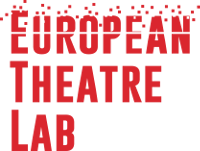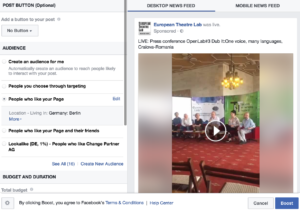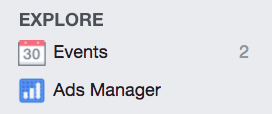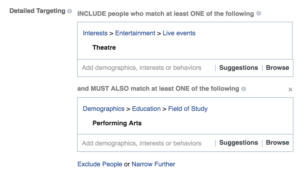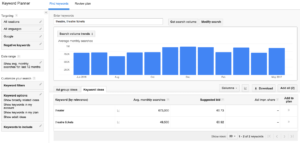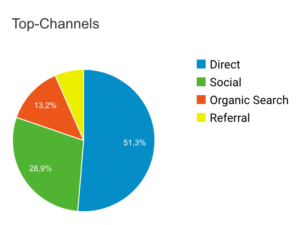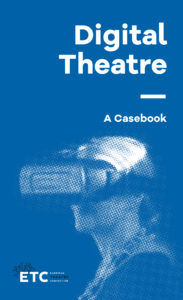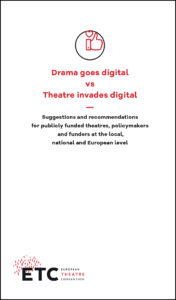We have provided you with an intro to online marketing and how theatres may use it for their advantage. Since the topic is a complex one, we would like to dive a bit deeper and provide you with additional knowledge.
Have you ever used Facebook Ads? Some would also qualify this as PPC (Pay-per-Click) or SEM (Search Engine Marketing) advertising, since you have to pay money for it. No worries though, even very small budgets can be used to advertise your cause, play or whatever else you’d like to advertise on Facebook. There are 2 ways to advertise; an easier one and a more complex one. The easier one consists of clicking the ‘Boost Post’ button below your post. Doing so gives you a few basic options to advertise your post to an audience you have previously defined, people who like your page, people who like your page and their friends, an audience Facebook automatically creates for you and an audience you create.
If you want more options and better targeting, go to the News Feed page and click on Ads Manager, which you will find on the left hand site. If you have not used it before, you will have to add some payment methods. Doing so will not take very long and you can quickly move on. You’re ready to create a campaign. Now you will have to decide what goal your Facebook Ads campaign should reach; you can get more traffic on your website, more users engaging with your post or liking your page, additional app installs and more views for a video, to just mention a few.
Pick the option that you are interested in and you will come to a screen where you can target your audience. Pick the location you are interested in; this can be a country, a city or a state; you can also choose numerous countries, cities or states. In addition, it helps to enter the languages your target audience speaks in the respective field.
Now you have entered the heart of the Facebook Ad Manager: the Detailed Targeting section. You have the chance to target your audience by a great amount of traits: interests, level of education, behaviors, demographic background. Choose the appropriate details, but be aware, that you can narrow your target audience even further by clicking on ‘Narrow Audience’. It is important to narrow your audience as much as possible especially when you pay money to reach them. Having 10 leads who are really interested in a performance is worth much more than 100 leads who’d rather watch a football game than going to the theatre any day.
You can also choose where the ads should be placed (on Instagram, in the news feed or the advertising column on the right hand side). Pick the one that suits your goal the best. Also, when typing in the budget and the duration, be cautious; sometimes, after you have changed a little detail, Facebook reverts the campaign length to about one month. Be aware that you can also chose what metric Facebook uses to bill you; by the amount of people (impressions) that see your ad or by actions that were taken by Facebook users (likes, clicks…). Once you have chosen all those options, click continue and pick the post/pictures you want to advertise. After a few minutes, Facebook will approve your post (unless it is not in accordance with the rules; most of them are common sense, with the exception that a Facebook ad can not contain more than 20% text) and it will be live. Congratulations!
Another well-known platform for paid advertisement is Google AdWords. Using AdWords, you can pay for an ad that gets shown when users search for keywords you selected on Google. This is a great way to get more visitors to your website, but also to sell tickets for a show; in many cases, Facebook Ads is a better/cheaper option to do branding and AdWords can help more effectively when it comes to selling something. You can also advertise YouTube videos via AdWords; so if you have one that you think highly of, feel free to promote it via YouTube. With AdWords, targeting is important as well. If you want to find out additional keywords, you can also use Google’s very own Keyword Planner. This tool helps you a great deal when it comes to getting information about search volume and the CPC (cost-per-click) for a keyword. Also, make sure to check what queries users entered before clicking on one of your ads; you can exclude certain keywords and search queries as well, if you think they are not relevant.
Google AdWords ads do have a quality score. This score consists of a number of factors. It is very important to provide users with a great landing page experience. This means, the page that is linked to your ad should be very relevant to their search query and cater to their search intention. Don’t bid on the keyword ‘tickets’ for instance, but rather ‘theater tickets’ or even better ‘theater tickets Lord of the Flies’, if you want to sell tickets to your play of Lord of the Flies. It is a good idea to be as detailed as possible; you will get less clicks than you would get with more general keywords, yet those clicks will be more relevant and you spent less money on users who are just remotely interested in your cause/play or whatever else you advertise. You can also connect AdWords with your Google Analytics account.
Speaking of which; please do work with some program that gives you more insight into your website visitors. This way you can find out, how many people visit your website, how long they remain on it, what source they came from (i.e. they found your site on Google, clicked on a Facebook post or on one of your AdWords campaigns). This information also helps you with optimising your individual pages on your website, which you should do periodically.
Google Webmaster Tools (www.google.com/webmasters/) can help you tremendously to understand how many people searched for keywords relevant to your site and ended up clicking on it, as well as how you rank on Google for those keywords. In addition, it shows you, if Google has any problems crawling your website and how you may fix those problems.
Please keep in mind that Google Analytics und Webmaster Tools require verification that you are the owner of a site/domain. This can easily be done by uploading a smile file on your FTP server or integrating some JavaScript code in your site’s source code/your CMS.
In addition, there are also a number of additional SEO solutions like Majestics, Sistrix, XOVI and MOZ. However, they will help you gain additional information, but you will still have to do the actual work.
We hope the second part of this blog series helped you to understand your theatre’s online marketing better. If you would like us to cover a certain aspect of online marketing or how theatre’s can leverage available online marketing tools, please share your thoughts with us.
